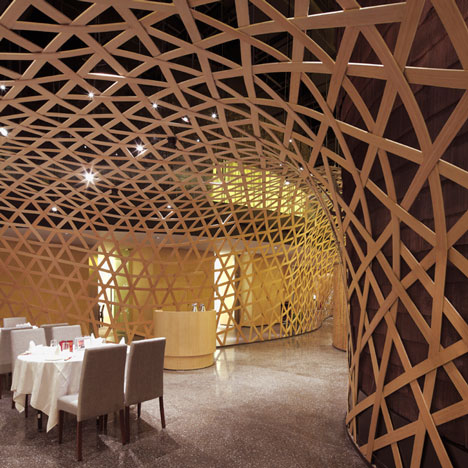
Tang Palace by FCJZ
A woven net of bamboo creates a curved suspended ceiling inside this restaurant in Hangzhou, China by architects FCJZ.
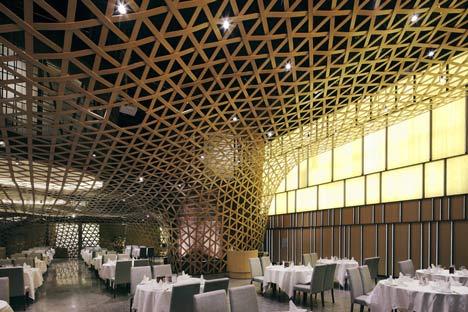
The internal spaces of Tang Palace are defined by linear bamboo screens and the central concrete core is wrapped in back-lit bamboo sheets, creating a light-box effect.
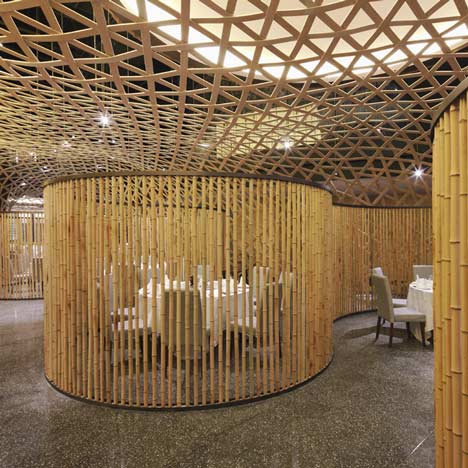
Private rooms are located on the upper levels, suspended above and visible through the restaurant ceiling.
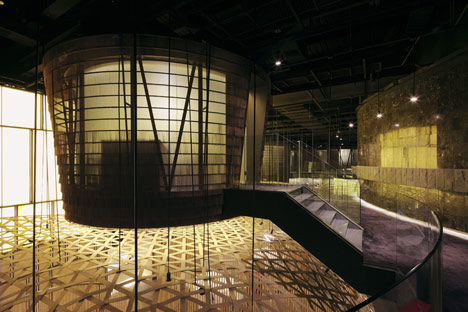
Photographs are by Shu He.
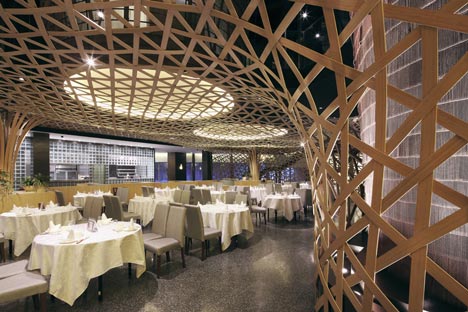
The following information is from the architects:
Tang Palace, Hangzhou
The restaurant is located on the top floor of a superstore in the new town area of Hangzhou, with 9-meter high story height and a broad view to the south. Composite bamboo boards are selected as the main material, conveying the design theme of combining tradition and modernity.
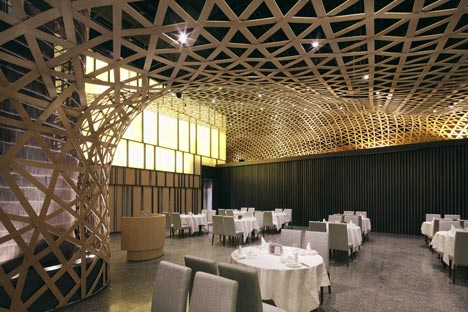
In the hall, to take advantage of the story height, some of the private rooms are suspended from the roof and creating an interactive atmosphere between the upper and lower levels, thus enriching the visual enjoyments.
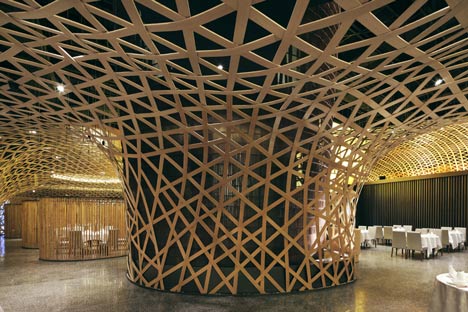
The original building condition has a core column and several semi-oval blocks which essentially disorganised the space. Hence, our design wants to reshape the space with a large hollowed-out ceiling which is made from interweaved thin bamboo boards; and extending from the wall to the ceiling.
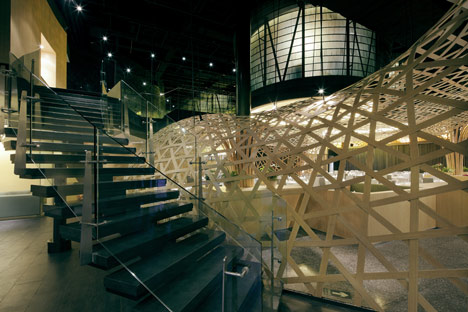
The waved ceiling creates a dramatic visual expression within the hall. The hollowed-out bamboo net maintains the original story height and thereby creates an interactive relation between the levels. We also wrapped the core column with light-transmitting bamboo boards to form a light-box, which transforms the previously heavy concrete block into a light and lively focus object.
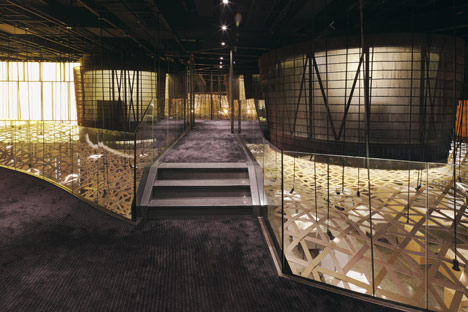
The entrance hall also follows the theme of bamboo. The wall is covered with bamboo material which follows the original outline of the wall, turning it into a wavy surface. In this way, the surface echoes the hall ceiling as well as performs a guiding function for customers.
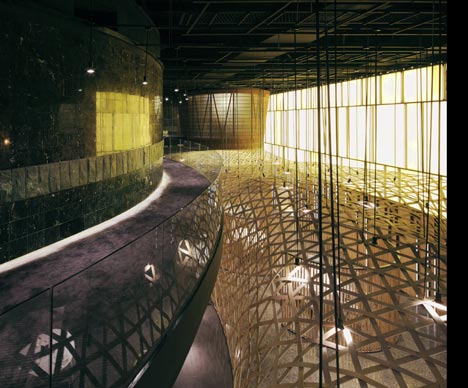
The design of private rooms embraces different characteristics. The rooms on the first level are relatively bigger and share the features of expanded bamboo net from the wall to ceiling and ornamentally engraved wall surfaces. Meanwhile, the different folding angles and engraved patterns make each room different from one another. The rooms above on the south are smaller and feature a special waved ceiling pattern and simple bamboo wall surface, which creates interesting and spacious room features.
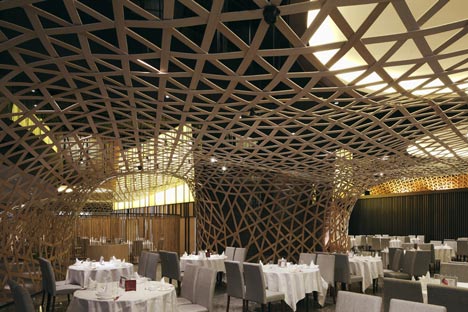
The key design concept of the space is that the suspended rooms are connected with suspended bridges and sideway aisles. The semi-transparent wall provides a subtle relationship between the inner and outer spaces, bestowing people with a special spatial experience.
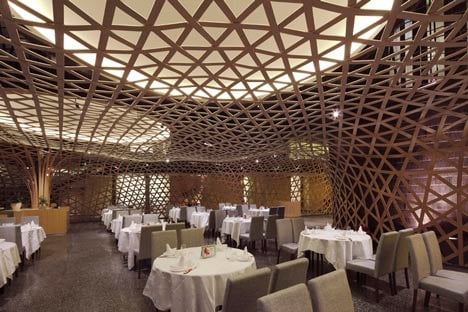
In this design, we hope to create diversified and yet an interrelated interior spaces through the different usages of the new bamboo material, responding to the local culture while seeking intriguing spatial effects.
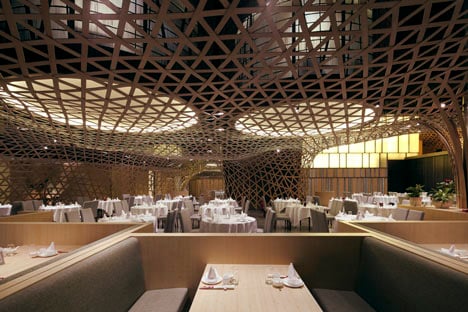
Project: Tang Palace, Hangzhou, China
Location: 6th Floor of MixC, No. 701, Fuchun Road, Jianggan District, Hangzhou, China
Client: HongKong Tang Palace Food&Beverage Group Co., LTD.
Area: 2460 ㎡
Materials: Bamboo, Composite Panel, Rubbed Concrete
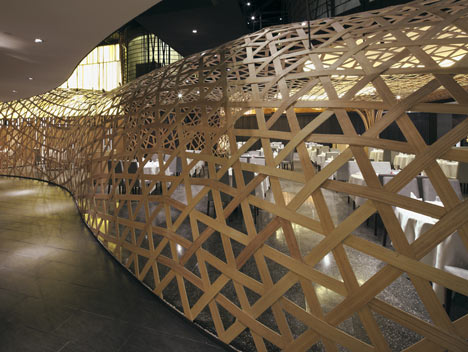
Designer: Atelier Feichang Jianzhu
Principal Designer: Chang Yung Ho
Project Architect: Lin Yihsuan
Design Team: Yu Yue, Wu Xia, Suiming Wang
Construction Period: February 2010 - July 2010
General Contractor: Shenzhen C.S.C. Decoration Design Engineering CO., LTD Beijing Branch
Finish material: Wall - bamboo(1f), marble(2f)/ Flooring - terrazzo(1f), carpet(2f) / Ceiling - bamboo net(1f), painting(2f)